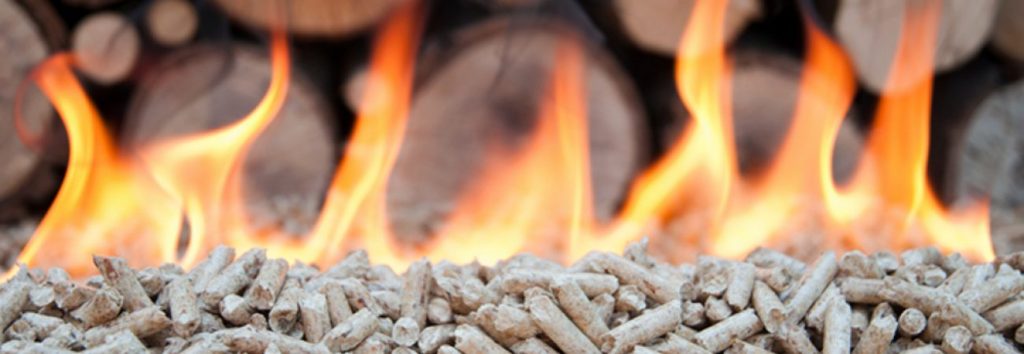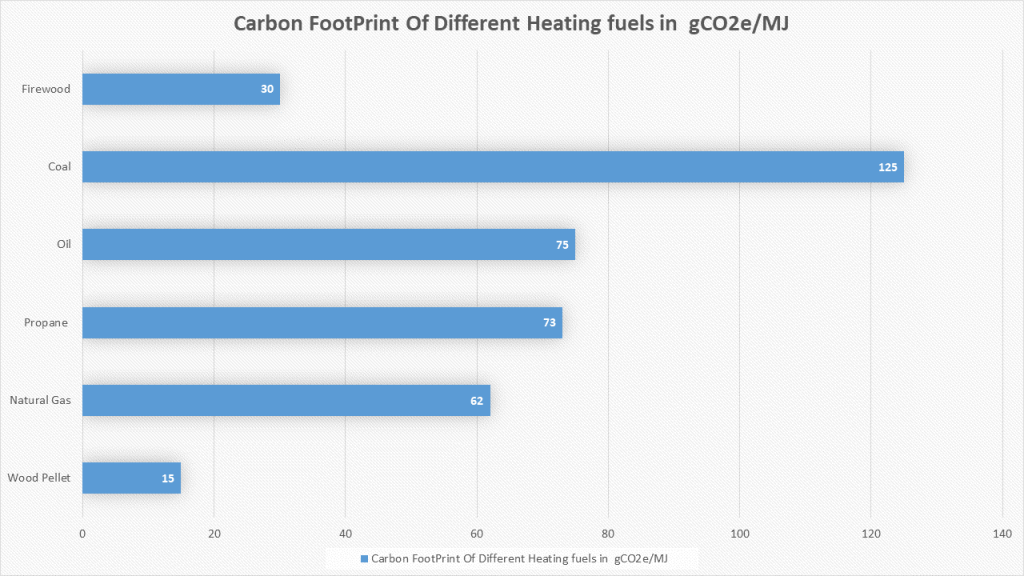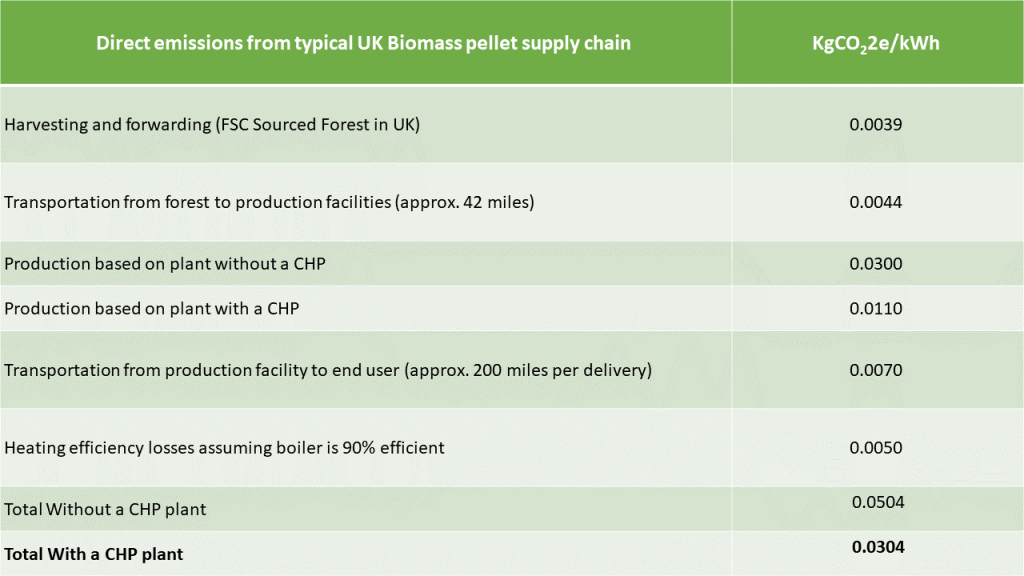Did you ever hear about wood pellets? Many of us haven’t heard of wood pellets, have they? Well, wood pellets are nothing but a type of pellet fuel. They’re typically produced by compacting sawdust, wood waste, corn stalks, grass, etc. Branches that are left behind after logging operations may also be recycled into these pellets. The very high density of these pellets ensures that their burn efficiency remains high and also makes it far easier to transport them in comparison to other renewable energy sources. Burning wood pellets and producing electricity has become very trending worldwide, especially, in Europe, where wood pellets are classified as one of the finest sources of renewable energy. Also, we have seen that wood pellets are using in the pellet stove as a fuel source and BBQ smoker for cooking and grilling. But, still, there is a lot of doubt on the sustainability and greenness of this biomass fuel. In this article, we will discuss its futures and what challenges manufacturers of wood pellets need to face to go long.

Are Wood Pellets a Renewable Energy Source?
The term “renewable energy source” gets thrown around a lot, but some don’t even know the exact definition. According to the U.S. Department of Energy, a renewable energy source is any medium of producing power that can be replenished within a single human lifetime.
Common examples include solar, wind, and hydroelectric power. Wood pellets are classified by the EIA as biomass fuel. According to the U.S. Energy Information Administration, biomass is a form of organic material which are produce from waste, plants, and animals, and is mostly used as a good source of fuel energy. They can be burned just as easily as coal except, unlike fossil fuels, they’re entirely renewable. The heat they generate upon being burnt can even be used to heat a home directly.
You might be worried that you’re still adding to the problem when the wood pellets you burn released carbon dioxide but rest assured as the EPA has stated that the carbon dioxide released during the burning of wood pellets doesn’t add to the carbon dioxide levels in our atmosphere.
Greenhouse gasses — or GHG — emissions are the cause of global warming, and coal manages to produce a whopping ⅕ of all GHG emissions. According to pellet.org, coal emits 125gram/CO2e/MJ compared to 15gram/CO2e/MJ of wood pellets. The carbon footprint associated with using wood pellets is nearly 1/10 that of coal. The pie chart is showing the footprint of carbon-di-oxide emission of different types of heating fuels.

That makes it eco-friendlier than propane, natural gas, and other “green” methods like firewood. As if all that wasn’t enough, they can even be used in coal plants without the need for any adaptions or alterations to the machinery.
Are Wood Pellets Sustainable?
Of course, you might be concerned that wood pellets are either unsustainable or end up leaving a bigger carbon footprint after you factor in things like harvesting and transport. Fortunately, studies show that the use of wood pellets can reduce carbon emissions by almost half. An analysis shows that wood pellets can reduce carbon emission by 80-90% compare to different fossil oil. Land-energy.com helps us to evaluate the wood pellet production process stage by stage from beginning to harvesting to allocate the associated carbon emission. The below table shows stage-by-stage emissions per kWh of heat energy which we have collected from a research paper about the sustainability of wood pellets.

Challenges of Wood Pellet Production
Habitat Conservation
One of the main concerns that environmentalists have when it comes to wood pellets is the fact that the harvesting of trees — which is an essential step for many wood pellet manufacturers — will affect the ecological balance of the surrounding area and drive many species to the brink of extinction.
While reducing carbon emissions is the global focus at the moment, many environmentalists still aren’t willing to flex on deforestation policy just to remedy the situation.
Wood pellet manufacturers, however, counter saying that their work actually saves forests as locals are encouraged to replant trees rather than cutting them down with the goal of commercial development.
They contend that by adding value to the wood, people will start seeing trees as a resource rather than an obstruction.
Carbon Emissions
Some scientists still aren’t on board with the idea that the burning of wood pellets doesn’t negatively impact the carbon dioxide levels in our atmosphere.
Environmentalists have stated that the only way for wood pellets to be truly sustainable is if the trees the companies replant are great enough in numbers to recapture the amount of carbon dioxide sent into the atmosphere during the burning of pellets.
They also said that branches and other discarded pieces of wood should be the main source of the pellets as cutting down whole trees just to produce them will increase the carbon dioxide in the atmosphere by way of fewer trees absorbing it.
Manufacturers argue that a reliance on waste wood isn’t sustainable in the long term and that the cutting of whole trees is an essential step towards the transition to wood fuel.
Loblolly pines and other softwood trees regrow relatively fast after being cut down — sometimes in a matter of only 12 years. Most manufacturers also claim to leave hardwood forests intact as these trees take far longer to regrow.
Deforestation
The Natural Resources Defense Council has been using GPS technology to monitor the state of forests that surround wood pellet manufacturers. This is being done in an effort to objectively analyze what percentage of the wood they use comes from waste and what percentage is taken from trees that they cut down.
With deforestation being an ever-looming threat, government agencies and nonprofits alike are keeping a watchful eye on the wood pellet industry to ensure they keep their eye on the ball and don’t create a carbon deficit. One study found that half of the wood used to create pellets at a plant in North Carolina was sourced from forested wetlands rather than waste wood.
Renewable =/= Sustainable
According to the Cary Institute of Ecosystem Studies, wood pellets are in fact renewable, but they aren’t carbon-neutral.
They agree that the burning of wood pellets produces less GHG emissions in comparison to fossil fuels such as coal or oil, but those at the institute seek to remind people that the removal of trees — the main carbon sink of our planet — will increase the net impact that wood pellets puts on the environment.
If 100% of the wood used was merely waste such as branches and roots then they wouldn’t have any issue with it, but so long as trees are being cut down for the production of wood pellets, they say that the fuel source can’t be truly sustainable.
Commercial Developments
Another concern amongst environmentalists is that the forest cleared for the production of wood pellets may be repurposed for commercial developments before anyone gets the chance to regrow the trees.
In such a case, the deforestation on our planet would rapidly increase as developers would use up the newly available real estate for their shopping malls, residential housing projects, and parking lots.
Conclusion!!
Wood pellets do have potential. They emit less GHG than coal and oil while being renewable. That being said, the manufacturers will need to find a way to meet demand without worsening the deforestation problem. Are they up for the task? We’ll just have to wait and see.
